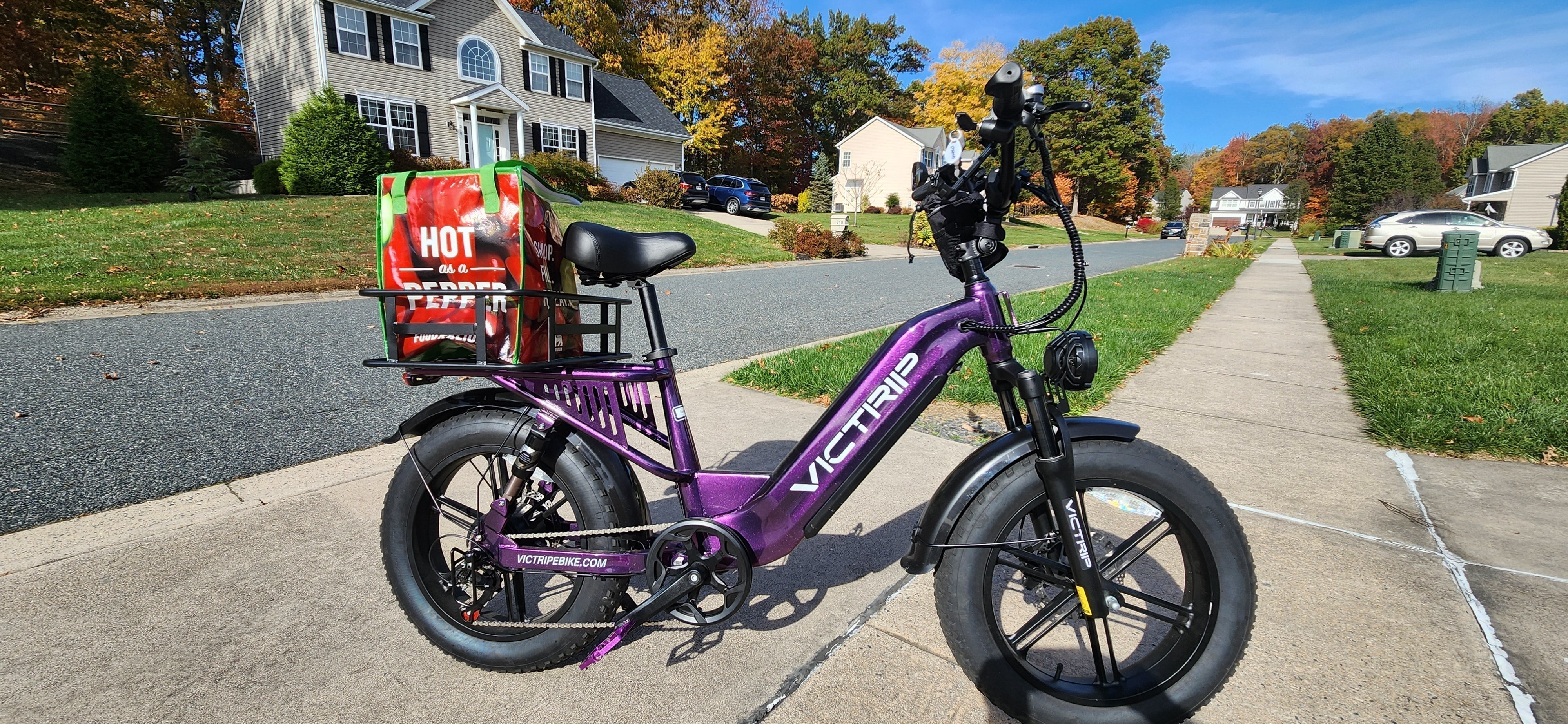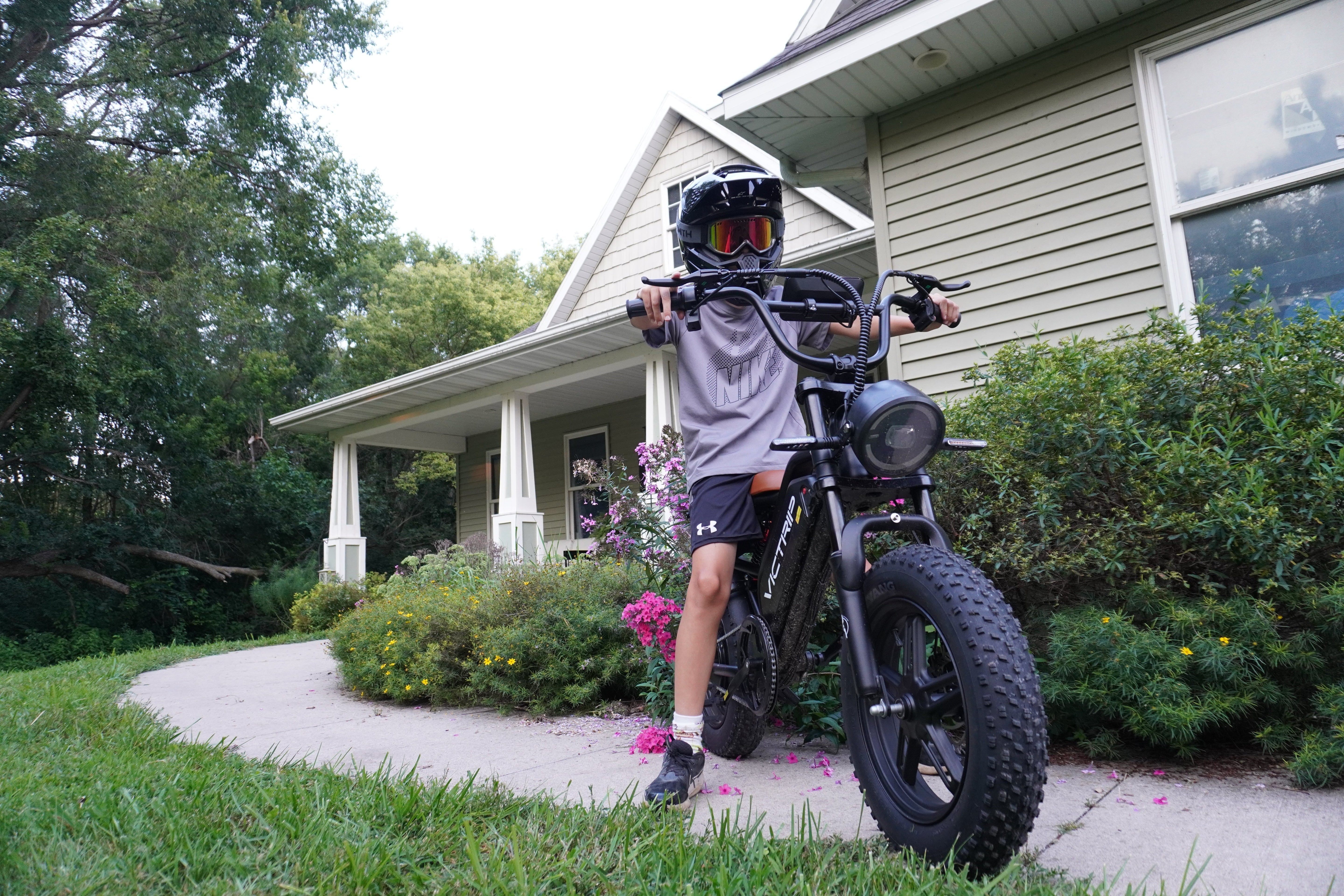
Why choose an electric tricycle?
An electric tricycle (e-trike) blends the stability of three wheels with the convenience of electric assist. You should consider an e-trike if you:
-
Want extra balance and stability compared with a two-wheel electric bike.
-
Need higher cargo capacity or passenger carrying options.
-
Seek a comfortable, upright riding position for errands, commuting, or leisure.
-
Prefer lower fall risk and easier mounting/dismounting — great for seniors or mobility-limited riders.
Compared to bicycles, e-trikes are steadier, more forgiving when stopping, and often better for carrying loads. They’re not as nimble as a bike, but they make daily life easier for many users. If you’re switching from a car for short trips or running small deliveries, an e-trike can be a practical, economical alternative.
Core components explained
Knowing the essential hardware answers a lot of questions before you test-ride.
Motor types
Motors come in hub, mid-drive, and occasionally geared hub variants. Hub motors (rear or front) are common on e-trikes: they’re simple and reliable. Mid-drive motors offer better hill handling but can be more complex and pricier.
Read More: Hub Drive vs Mid Drive: Which eBike Motor Is Better?
Battery chemistry & capacity
Most e-trikes use lithium-ion batteries. Capacity is measured in watt-hours (Wh). Higher Wh means greater potential range but also more weight. Typical consumer e-trikes range from ~300Wh (short trips) up to 1000Wh+ for long-range or cargo models.
Controller & sensors
The controller governs power delivery. Cadence sensors are simpler — they detect pedaling motion and give assist in fixed jumps. Torque sensors measure how hard you pedal and supply a smoother, more natural assist. Torque sensors feel more intuitive but add cost.
Frame, wheelbase and load design
Frame geometry affects stability and comfort.
Materials
Aluminum frames are typical — strong and light. Steel is heavier but durable and easier to repair. Carbon is rare on trikes due to cost.
Cargo vs passenger
Decide whether you need cargo space, child seats, or passenger benches. Rear cargo boxes and platform racks vary in size; confirm manufacturer weight limits.
Step-through vs step-over
Step-through frames are ideal for easy mounting, especially for older riders or those with mobility limits. Step-over frames can be stiffer and sometimes sportier.

Power, speed and range — what matters most
Selecting motor power and battery capacity requires balancing speed, range, and weight.
Wattage and performance
Motor power is often listed in watts (e.g., 250W, 500W, 1000W). Higher wattage helps with hills and heavier loads. However, local regulations may limit maximum motor power or assisted speed.
Top speed
E-trikes have assisted speeds commonly around 20–28 mph (32–45 km/h) depending on rules and motor configuration. Think about whether you want a leisurely 15–20 mph commuter or a faster cargo trike.
Realistic range factors
Range isn’t just battery size. Expect actual range to vary based on rider weight, cargo, terrain, wind, assist level, and temperature. Manufacturers’ estimates are optimistic — plan 60–80% of the claimed range for real trips.
Brakes, suspension and handling
Safety and control depend on braking and suspension.
Brake types
Hydraulic disc brakes give the best stopping power, especially for heavy loads. Mechanical discs are adequate for light duty. For heavy cargo or steep terrain, prioritize hydraulic discs.
Suspension choices
Front suspension forks or full suspension improve comfort on rough roads. If you ride on smooth urban streets, rigid forks keep maintenance low and efficiency high.
Stability and steering
A longer wheelbase improves straight-line stability; however, it reduces tight turning ability. For city errands, pick a more maneuverable setup; for hauling, favor stability.
Comfort, ergonomics and accessibility
If you’re riding daily, comfort must come first.
Seating
Look for adjustable seats with wide bases or sprung saddles for comfort. Some trikes offer bench seats or loungers — try them.
Controls and reach
Handlebar height and grip angle should allow relaxed shoulders. Electric controls (throttle, PAS level) should be reachable without stretching.
Storage and weather protection
Consider built-in locks, covers for cargo boxes, and weatherproofing. For year-round riders, look into fenders and integrated canopies or cab enclosures.
Step-through vs step-over
Step-through frames are ideal for easy mounting, especially for older riders or those with mobility limits. Models like the VICTRIP T1 Foldable Electric Tricycle combine a step-through design with foldability, making them especially accessible for urban commuters with limited storage space.
TOP PICK

VICTRIP® T1 Foldable Electric Tricycle
Safety, lights and legal rules
Safety gear and compliance matter.
Local laws
Regulations vary hugely. Check whether e-trikes are classed as bicycles, mopeds, or low-speed vehicles in your area. This affects helmet requirements, licensing, and where you can ride.
Lighting & visibility
Choose strong front and rear lights, reflectors, and, if hauling at night, extra side visibility on racks. A horn or bell is essential for urban riding.
Protective gear
Even at low speeds, helmets and gloves reduce injury risk. For cargo riders, consider high-visibility clothing and additional mirrors.
Cargo, hauling and customization
E-trikes shine at carrying things.
Capacity and racks
Confirm payload ratings (e.g., 100 kg rear box). Modular racks let you switch between deliveries, groceries, or family seats.
Child seats & trailers
Many trikes can accept child seats designed for three-wheel platforms. Use manufacturer-approved seats and fastening systems.
Commercial conversions
Businesses can fit insulated boxes, advertising panels, or e-commerce delivery attachments. Ask dealers about commercial packages.
Charging, battery care and life expectancy
Battery health is the long-term cost driver.
Charging patterns
Avoid depleting the battery to 0% often — partial charges maintain long-term capacity. Charge after rides or daily if you rely on full range.
Storage & climate
Store batteries in cool, dry conditions. Extreme heat and cold both reduce battery performance and longevity.
Replacement & recycling
Batteries typically last 3–7 years depending on use. Check warranty terms and recycling programs available in your country.
Maintenance and troubleshooting
Routine care keeps an e-trike reliable.
Routine checks
Weekly: tire pressure, lights, brakes. Monthly: chain/lubrication, battery mount, bolts. Annual: professional tune-up for bearings and motor.
Common faults
Loose connectors, flat tires, worn brake pads, and software updates can cause problems. Most are straightforward fixes if you follow a checklist.
When to visit a shop
If the motor or battery shows unusual behavior (smell, overheating, rapid discharge), stop using it and consult a certified technician.
Budgeting and total cost of ownership
Don’t focus only on purchase price.
New vs used
New models have full warranties and latest tech; used trikes may be great value but check battery health and maintenance history.
Warranties & service
Battery warranties vary (often 1–3 years). Ask about service plans, spare parts availability, and local dealer support.
Insurance & registration
Some regions require registration or insurance for higher-speed or powerful models. Factor this into your yearly cost estimate.
How to test-ride and evaluate an e-trike
Try before you buy — here’s a checklist.
Test checklist
-
Mount and dismount ease.
-
Acceleration with load (bring a bag if needed).
-
Braking distance with cargo.
-
Comfort after 10–20 minutes.
-
Check motor noise and vibration.
-
Evaluate turning radius and parking.
Measuring during ride
Time acceleration from standstill to a moderate speed, note assist smoothness, and test lowest battery assist to gauge efficiency.
Matching models to rider profiles
Use this simple matrix to choose:
-
Senior commuter: Step-through frame, torque sensor, comfortable bench or wide seat, hydraulic brakes, mid-range motor (250–500W).
-
Cargo/last-mile business: High-capacity battery (≥700Wh), powerful motor (500–1000W), large rear box, hydraulic brakes, robust frame.
-
Leisure & touring: Balanced battery (500–800Wh), comfortable seat, suspension, mid-drive or strong hub motor, racks for panniers.
Where to buy and trusted resources
Buy from a dealer if you want local service and test rides; buy direct for lower upfront cost but consider support.
-
Check manufacturer dealer locators and reputable e-bike shops.
-
Use online marketplaces for research, but verify battery and motor health on used buys.
External resource: For technical background on electric two- and three-wheel vehicles, see the general overview at Wikipedia: https://en.wikipedia.org/wiki/Electric_bicycle.
Conclusion and final checklist
You now have the framework to choose an e-trike that fits your needs. Use this quick checklist before buying:
-
Purpose: commuting, cargo, or leisure?
-
Frame: step-through vs step-over?
-
Motor & battery: power and Wh appropriate for terrain and load?
-
Brakes & suspension suitable for weight and speed?
-
Comfort: test-ride for at least 10–20 minutes.
-
Local compliance: helmet, registration, and speed limits checked.
-
Support: warranty, dealer, and spare parts availability confirmed.
Take your time, test several models, and prioritize safety and local support. With the right match, an electric tricycle can transform how you commute, shop, or run a small delivery business.
FAQs
Are electric tricycles legal everywhere?
A: No — laws differ by country and locality. Some places categorize powerful e-trikes as mopeds or low-speed vehicles, requiring registration and helmets. Always check local transport authority rules before riding.
How long will an e-trike battery last?
Typical lifespan is 3–7 years depending on usage, charge habits, and climate. Proper care — avoiding full discharges, storing in moderate temperatures, and gentle charging — prolongs life.
Can I ride an e-trike in the rain?
Most e-trikes are water-resistant but not fully waterproof. Short wet rides are usually fine, but avoid submerging the battery or motor and dry contacts after heavy rain. Look for IP ratings when available.
How much maintenance does an e-trike need?
Routine maintenance includes tire pressure, brake checks, chain lubrication, and battery inspections. Expect a yearly professional checkup; heavier use and cargo hauling increase maintenance frequency.
Is a mid-drive motor better than a hub motor for e-trikes?
Mid-drive motors offer efficient hill climbing and better weight distribution but are pricier and more complex to maintain. Hub motors are simpler and robust — often a good choice for cargo trikes.




Share:
Hub Drive vs Mid Drive: Which eBike Motor Is Better?
Beach Cruiser Vs Commuter EBike? What are the differences?